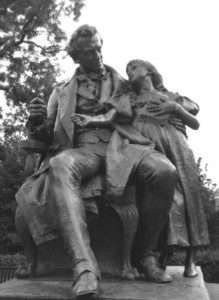 Thomas Gallaudet intended to be a preacher of the gospel from a young age, but God intervened in a most unusual way. In 1814, after graduating from Andover Theological Seminary, he resided in Hartford, Connecticut. On May 25 of 1814 he observed nine year old Alice Cogswell watching other children play and not being included. He found out from her father that she was deaf due to a childhood illness when only two. At the time deafness was considered a mental illness – some even thought you were not needed or less than human.
Thomas Gallaudet intended to be a preacher of the gospel from a young age, but God intervened in a most unusual way. In 1814, after graduating from Andover Theological Seminary, he resided in Hartford, Connecticut. On May 25 of 1814 he observed nine year old Alice Cogswell watching other children play and not being included. He found out from her father that she was deaf due to a childhood illness when only two. At the time deafness was considered a mental illness – some even thought you were not needed or less than human.
To Thomas, however, Alice was made in the image of God and his faith in Christ inspired compassion to teach her. So, he moved next door to her home and began to teach her by writing pictures and letters in the dirt. After spending 15 months in France studying how to teach the Deaf, Thomas, Mason, (Alice’s father,) and Laurent Clerc (a Deaf French man who came as lead teacher) founded the Connecticut Asylum for the Education and Instruction of Deaf and Dumb Persons at Hartford on April 15, 1817. The name has since changed several times due to the change in acceptable terms. It is now known as the American school for the Deaf (ASD.)
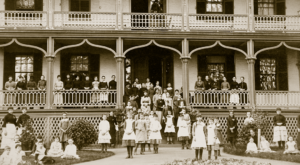 The first class had seven students and was held in Bennett’s City Hotel. The Congregational Churches of New England reported that there were 80 deaf children in the Northeast and 800 in the United States – but these were only the numbers they could verify. The enrollment of the school soon grew, and many other schools started across the country, at least one in each state. Deaf education in America is finally getting the national attention it deserves as it prepares to celebrate its bicentennial – 1817-2017. It now has had more than 4,000 graduates!
The first class had seven students and was held in Bennett’s City Hotel. The Congregational Churches of New England reported that there were 80 deaf children in the Northeast and 800 in the United States – but these were only the numbers they could verify. The enrollment of the school soon grew, and many other schools started across the country, at least one in each state. Deaf education in America is finally getting the national attention it deserves as it prepares to celebrate its bicentennial – 1817-2017. It now has had more than 4,000 graduates!
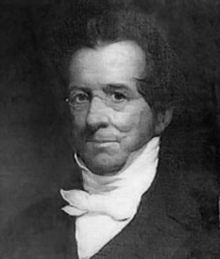 Thomas Hopkins Gallaudet was born December 10, 1787 in Philadelphia, Pennsylvania. Providentially, the Constitution of the United States had just been written in his hometown and sent to the States and their delegates for ratification. Its protection of innovation in education would prove significant. When Thomas was thirteen his parents moved to Hartford. Desiring to be a minister to youth, he stayed behind but due to poor health rejoined his parents. He graduated from Yale University and also received his Master’s. His congregation was now the Deaf and Hard of Hearing!!
Thomas Hopkins Gallaudet was born December 10, 1787 in Philadelphia, Pennsylvania. Providentially, the Constitution of the United States had just been written in his hometown and sent to the States and their delegates for ratification. Its protection of innovation in education would prove significant. When Thomas was thirteen his parents moved to Hartford. Desiring to be a minister to youth, he stayed behind but due to poor health rejoined his parents. He graduated from Yale University and also received his Master’s. His congregation was now the Deaf and Hard of Hearing!!
 Within Deaf communities several sign languages developed early in the 1800’s in the US, however, no standard sign language existed. On Martha’s Vineyard, from 1710 through the 1850’s an unusual genetic deafness on the island caused a large number of Deaf people which caused the entire island to learn sign language. Thus, it was nick-named the island that spoke by hand. This inspired gospel preachers to bring the gospel to the Deaf. The first Deaf individual on the island was Jonathan Lambert who came in 1694. He was an integral part of the society and bought land from Native Americans – still called Lambert’s Cove to this day. He married a hearing woman, had seven children, two of whom were deaf, and died a fairly wealthy man at age 80! The amazing fact is that well before deafness was accepted, this little island was virtually bi-lingual in spoken English and Martha’s Vineyard sign language. Also, due to the sustained revival and Christian spirit, as well as the isolation of the island from the mainland, Deaf people were accepted as equals – something ahead of its time.
Within Deaf communities several sign languages developed early in the 1800’s in the US, however, no standard sign language existed. On Martha’s Vineyard, from 1710 through the 1850’s an unusual genetic deafness on the island caused a large number of Deaf people which caused the entire island to learn sign language. Thus, it was nick-named the island that spoke by hand. This inspired gospel preachers to bring the gospel to the Deaf. The first Deaf individual on the island was Jonathan Lambert who came in 1694. He was an integral part of the society and bought land from Native Americans – still called Lambert’s Cove to this day. He married a hearing woman, had seven children, two of whom were deaf, and died a fairly wealthy man at age 80! The amazing fact is that well before deafness was accepted, this little island was virtually bi-lingual in spoken English and Martha’s Vineyard sign language. Also, due to the sustained revival and Christian spirit, as well as the isolation of the island from the mainland, Deaf people were accepted as equals – something ahead of its time.
Laurent Clerc brought French sign language in 1817 when the ASD was founded, and Deaf individuals from Martha’s Vineyard attending the school in Hartford brought their sign language. The merging of these two lead to what is now known as American Sign Language (ASL.). The development of a language that to most hearing people is very difficult and complex only proved how capable deaf individuals were and that sign language is a real language. But Gallaudet’s legacy would reach further when, later in his life, he would work with those identified as mentally ill, bringing services to them as equals like he did for the Deaf, again ahead of his time.
As it is with all who have been marginalized due to the sinful nature of those who would cling to power at the expense of others, it took the compassion of an individual, inspired by his Christian faith, to help the Deaf claim their promise of equality as written in our Declaration. Also, under our Constitution, they were able to be innovative in their own unique education. By 1863, 22 Deaf schools had been started in the U.S., most of them founded by Clerc’s students. After Thomas died in 1851, his youngest son Edward Miner Gallaudet continued his work. Though teaching in Hartford, his dream was a college for the Deaf. He became superintendent of the Columbia Institution for the Deaf and Dumb and the Blind in Washington, D.C. He presented the idea for a Deaf college to Congress, and in 1864 Columbia Institute was born. In 1986 it was renamed Gallaudet University, the only Deaf university in the world! The realization of these dreams at the time of the Civil War was timely and significant.
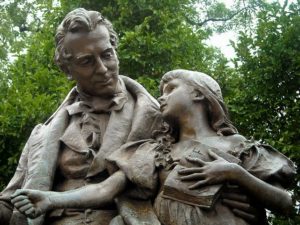 In 1883, at the second convention of the National Association of the Deaf, a member of the deaf community suggested a statue be erected to honor Thomas Gallaudet for the 100th anniversary of his birth in 1887. Though a controversy arose as to who should be the sculptor and where it should be placed; it was decided that Daniel Chester French would create it to be placed in DC on the college campus. It shows Gallaudet seated on a chair with his arm around Alice and his hand spelling the letter “A.” Alice stands beside him, with a book in one hand and spelling “A” with the other. It was unveiled and dedicated June 26, 1889. Daniel French would also make another statue, from the same mold, to place in Hartford in 1925!
In 1883, at the second convention of the National Association of the Deaf, a member of the deaf community suggested a statue be erected to honor Thomas Gallaudet for the 100th anniversary of his birth in 1887. Though a controversy arose as to who should be the sculptor and where it should be placed; it was decided that Daniel Chester French would create it to be placed in DC on the college campus. It shows Gallaudet seated on a chair with his arm around Alice and his hand spelling the letter “A.” Alice stands beside him, with a book in one hand and spelling “A” with the other. It was unveiled and dedicated June 26, 1889. Daniel French would also make another statue, from the same mold, to place in Hartford in 1925!
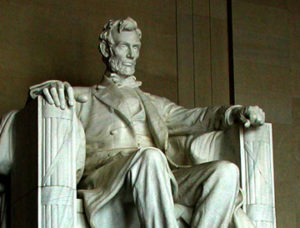 In 1919, Chester French sculpted his famous seated Lincoln, and many have noted that Lincoln’s two hands are spelling “a” and “l” in American Sign Language. French had been inspired by his work with the Deaf Community! Also, doing this on a Lincoln statue, who was known for his defense of the Declaration that “all men are created equal” was also significant.
In 1919, Chester French sculpted his famous seated Lincoln, and many have noted that Lincoln’s two hands are spelling “a” and “l” in American Sign Language. French had been inspired by his work with the Deaf Community! Also, doing this on a Lincoln statue, who was known for his defense of the Declaration that “all men are created equal” was also significant.
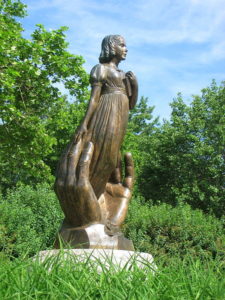 In Hartford, another statue commemorates the work of Gallaudet and his first student, Alice. Located near where the original school was built, she stands with a book near her heart and her hand touching the larger ones of compassion. Alice died at only 25 years of age, but her hunger to learn had caused a preacher to minister to a whole new congregation! May we never forget what one person can do in obedience to God’s call, and may we always embrace the truth that all are created equal in the eyes of God!
In Hartford, another statue commemorates the work of Gallaudet and his first student, Alice. Located near where the original school was built, she stands with a book near her heart and her hand touching the larger ones of compassion. Alice died at only 25 years of age, but her hunger to learn had caused a preacher to minister to a whole new congregation! May we never forget what one person can do in obedience to God’s call, and may we always embrace the truth that all are created equal in the eyes of God!







